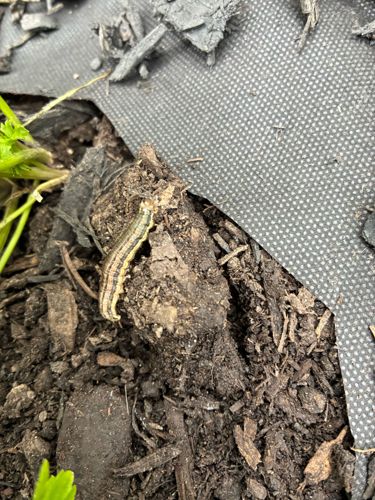Cutworm (larva of a Noctuid Moth)
Scientific Name: Various species within the family Noctuidae, e.g., Agrotis ipsilon (Black Cutworm)
Order & Family: Order: Lepidoptera, Family: Noctuidae
Size: Larvae typically range from 2.5 to 5 cm (1 to 2 inches) in length when fully grown.

Natural Habitat
Cutworms are typically found in agricultural fields, gardens, and other areas where young plants grow. They live in or just below the soil surface, especially in loose soil, and are active during spring and early summer when young plants are emerging.
Diet & Feeding
Cutworms are herbivorous and are notorious garden pests. They feed on the stems of young plants at or just below the soil surface, often severing them entirely, hence their name. They also consume leaves and roots. A wide variety of plants are susceptible, including vegetables (e.g., tomatoes, cabbages, corn), ornamentals, and field crops.
Behavior Patterns
Cutworms are nocturnal, feeding at night and hiding just beneath the soil surface or under debris during the day. When disturbed, they often curl into a tight C-shape. They undergo complete metamorphosis, with larvae (cutworms) pupating in the soil before emerging as adult moths.
Risks & Benefits
Potential Risks: Cutworms are significant agricultural and garden pests, capable of causing widespread damage to young plants, leading to severe crop loss. They can decimate entire rows of seedlings overnight. Potential Benefits: As adults, some noctuid moths play a role in pollination. The larvae themselves can be a food source for natural predators like birds and beneficial insects, which can help control their populations. They are also part of the detritus food chain when they die. However, their destructive potential in gardens and farms often outweighs perceived benefits from a human perspective.
Identified on: 8/9/2025